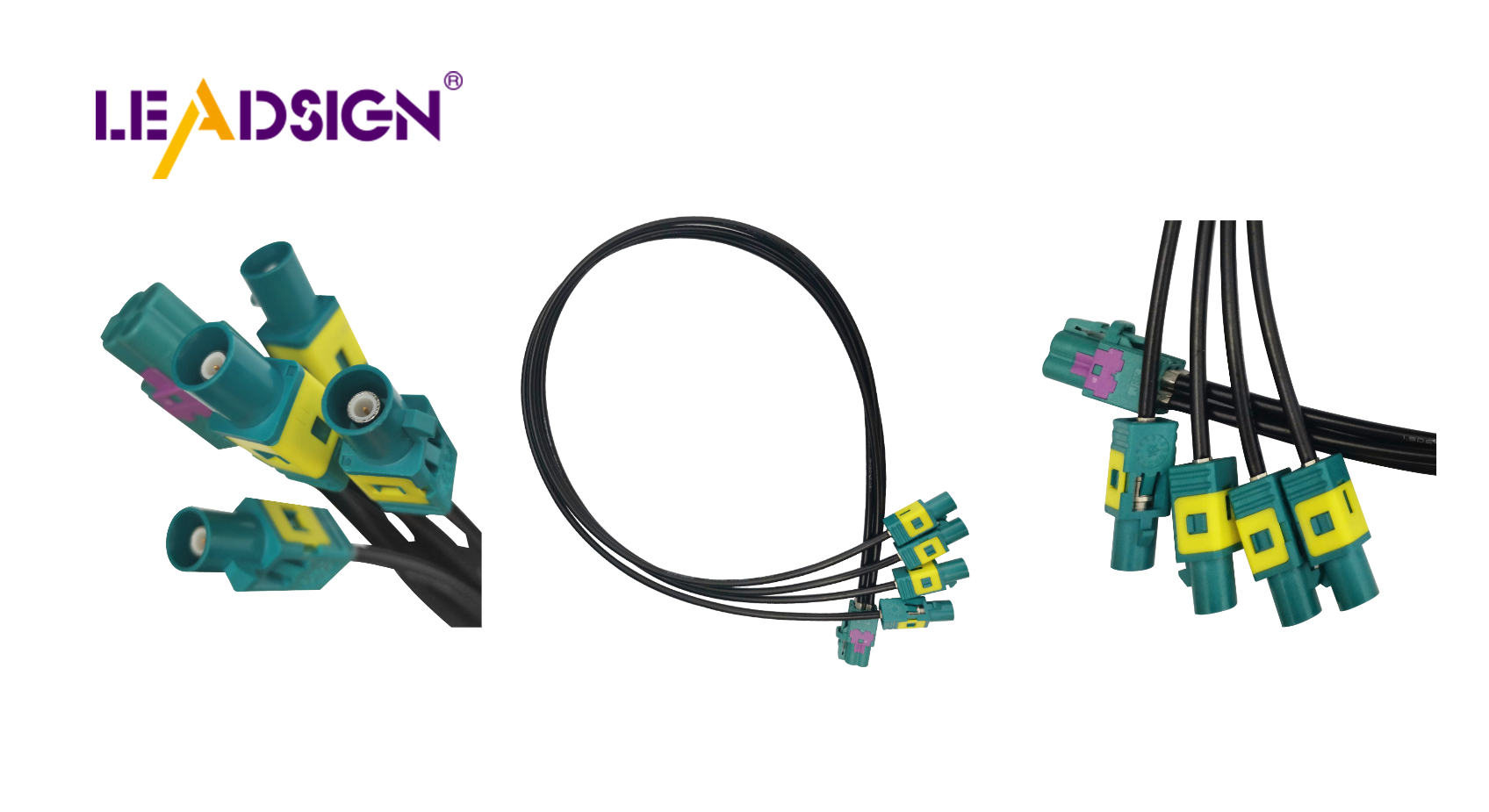Understanding Automotive RF Cable Specifications

Automotive wire, specifically RF cable, plays a crucial role in vehicles. They facilitate communication and connectivity within cars. Modern vehicles are equipped with systems like GPS, infotainment, and vehicle-to-vehicle communication, all of which rely on RF cables to transmit signals effectively. These cables ensure signal integrity, making them indispensable in automotive applications. Beyond cars, RF cables are also utilized in television, military, and aerospace industries, providing robust connections and reliable communication. As vehicles become more technologically advanced, the demand for RF cables continues to increase.
Industry Standards and Specifications
FAKRA Standards
Overview of FAKRA connectors
FAKRA connectors are very important in cars. They help RF cables connect well. These connectors have a plug and jack that snap together. They are inside a plastic cover. You can hear a click when they lock, so you know it’s secure. There are 14 types with different colors to avoid mix-ups. They work at frequencies up to 6 GHz, which is good for many car uses.
Importance in automotive applications
In cars, FAKRA connectors are needed. They help systems like GPS and infotainment work well. By keeping signals strong, these connectors make sure wires and cables do their job right. Their tough design helps them last in rough car conditions, making them strong and reliable. Since they handle high frequencies, they are key for new cars that need advanced communication.
USCAR Standards
USCAR specifications for RF cables
USCAR standards set strict rules for RF cables in cars. These rules make sure wires and cables work well together. For example, the USCAR17-6 rule checks if RF connectors work from DC to 6 GHz frequencies. This makes sure communication in cars is reliable. Also, the USCAR17-1 rule looks at RF connectors over 200 MHz, which is important for today's car systems.
Compliance and testing requirements
Following USCAR standards means lots of testing to check if RF cables meet the rules. Tests look at things like frequency range and how well they block interference. By following these rules, makers ensure their products work well in cars. Testing also checks how strong and weather-proof the cables are so they last long in tough car environments.
Technical Details of RF Cables
Frequency Range
What it means and why it matters
The frequency range shows how well an RF cable can send signals. In cars, this is important for systems like GPS to work smoothly. RF cables need a wide range to connect different car parts without problems.
How it affects signal strength
A bigger frequency range makes signals clear by stopping interference. Good RF cables keep signals strong, even in tough places. This is crucial for new cars where communication must be steady for safety.
Impedance
What impedance means in RF cables
Impedance is the resistance an RF cable has against current flow. It's measured in ohms and affects how car wires work. Most RF cables have 50 ohms, which keeps signals clear.
Its role in performance
Matching impedance reduces signal loss and reflection. When an RF cable's impedance matches devices, signals move efficiently. This is key in cars where precise part communication is needed.
Shielding
Types of shielding used
Shielding uses materials like braids or foil to block interference (EMI). It keeps signals clear in car wire systems. Different shielding types give various protection levels for specific needs.
Why good shielding helps
Good shielding cuts EMI, keeping signals clean and undistorted. This is vital in cars with many electronic systems running together. By lowering interference, RF cables boost vehicle communication reliability.
RF cables are used in many areas like cars and radar systems. The market changes as materials improve, meeting the need for strong car wire solutions.
Mini FAKRA Cable
Features
Small design
Mini FAKRA Cable Assemblies are small and save space. They are 80% smaller than regular FAKRA connectors. This makes them great for new cars where space is tight. Even though they are small, they still work well in many car systems.
Fast performance
The Mini FAKRA Connectors send data very fast, up to 28 Gb/s. They work at frequencies up to 9 GHz. This means they help car systems talk clearly and reliably. This speed is important for things like self-driving cars and high-tech entertainment systems.
Benefits
Saves space in cars
Mini FAKRA cables use less room in cars. They need 80% less space than old FAKRA connectors. This helps car makers plan better wire layouts. It's useful for making smaller, sleeker car models.
Better signal strength
Mini FAKRA cables make signals strong by handling high data rates and frequencies. This keeps communication clear between car parts like GPS and driver help tools. Good signal quality makes modern cars more reliable.
Applications
Use in new car systems
Mini FAKRA cables are used a lot in today's car systems. They are key for things like cameras, GPS, and self-driving tech. Their fast data handling fits complex systems needing quick data swaps.
Works with other parts
These cables fit with both new and old car parts. Mini to standard FAKRA cable assemblies connect different tech generations smoothly. This lets makers upgrade without big changes to current wires.
Automotive RF cables are important for cars today. They help with communication and connection. These cables follow rules like FAKRA and USCAR to work well. The Mini FAKRA Cable is new, small, and fast. In the future, better materials will make these cables even better. 5G technology needs fast data, so more changes will come. As cars get smarter, RF cables will change too, helping new car systems work right.
See Also
Maximizing Automotive Connectivity with FAKRA Coaxial Cables
Benefits of HFM RF Connectors for Automotive Innovation
Improving Automotive Data Flow with FAKRA PCB Connectors
Enhancing Automotive Data Transfer with Advanced Connectors
Benefits of FAKRA PCB Mount Connectors for Automotive and RF

